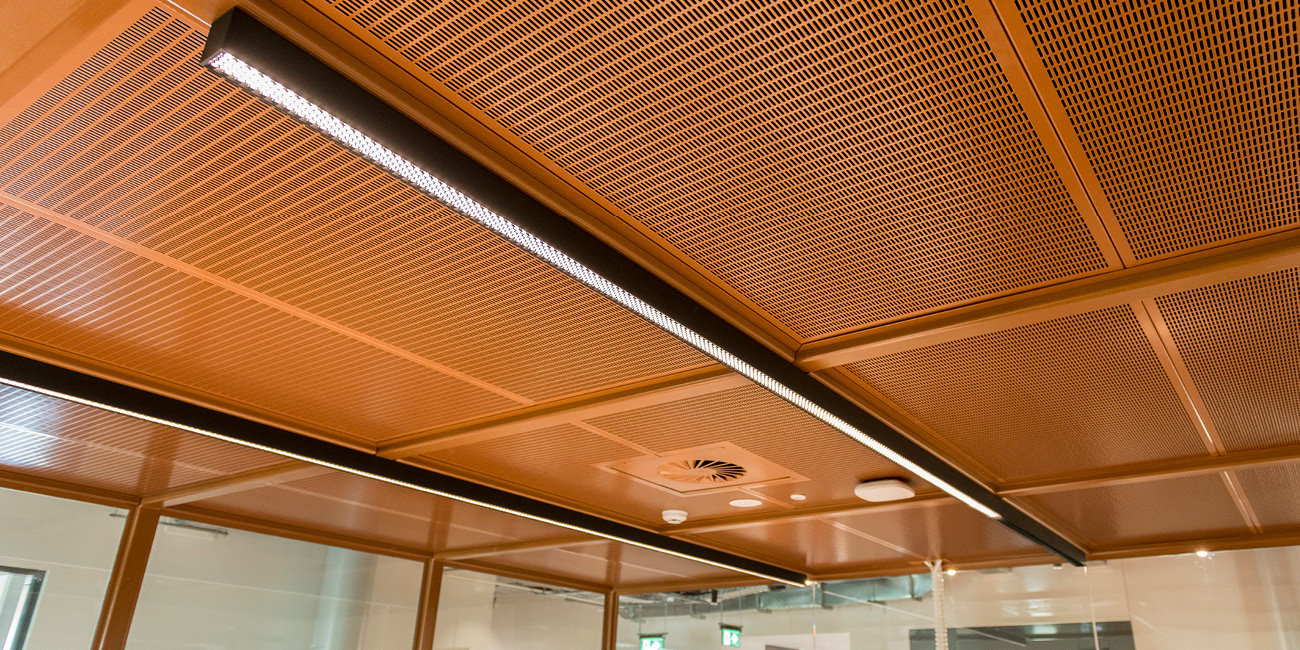FAQ: Acoustics
FAQ: Acoustics
Metal ceiling systems can offer effective acoustic performance when designed with perforations and backed by acoustic materials.
Metal ceiling systems are valued for their sleek, modern aesthetic, making them ideal for contemporary architectural designs. Available in various finishes, colours, and panel designs, they allow architects and designers to achieve both acoustic performance and visual appeal.
The acoustic performance of metal ceilings can be tailored by adjusting factors such as perforation size, pattern, depth, and the type of acoustic materials used.
How do metal ceilings enhance sound absorption?
Metal ceiling panels are highly effective at absorbing sound when designed with specific features:
Perforations: Small holes in the panels allow sound waves to pass through the metal. The size, shape, and spacing of these perforations are key. Panels with larger, more closely spaced holes generally provide better sound absorption.
Acoustic Backing: Materials such as acoustic fleece, pads, or boards are installed behind the panels to absorb sound. The type, thickness, and installation of these materials play a major role in their effectiveness.
Air Gap: A deliberate gap between the panel and the ceiling enhances sound absorption.
Together, these elements allow sound to pass through the perforations and be absorbed by the backing material. Panels with larger and more densely spaced perforations typically offer superior sound absorption.
What are the different impacts of NRC and CAC ratings?
Noise Reduction Coefficient (NRC) and Ceiling Attenuation Class (CAC) are key indicators of a ceiling system’s acoustic performance, each serving a distinct function:
NRC measures how well a ceiling absorbs sound within a room, helping control reverberation and lower noise levels. A high NRC rating (above 0.70) is essential for spaces where clear in-room acoustics are a priority, such as open offices.
CAC evaluates how effectively a ceiling blocks sound transmission between adjacent rooms. A CAC rating of 35 or higher is ideal for ensuring privacy in areas like offices, classrooms, and healthcare facilities.
Choosing ceiling systems with both high NRC and CAC ratings ensures superior acoustic comfort, providing a tailored balance of sound absorption and noise isolation for your space.
Does the tile size effect the acoustic performance?
Larger tiles typically offer more surface area than smaller ones, allowing for a greater amount of sound-absorbing material. This increased surface area enhances the ceiling’s overall acoustics by providing more opportunities for sound waves to be absorbed. As a result, reverberation is reduced, and speech intelligibility is improved within the room.
How does the acoustic performance change for different ceiling void depths?
A deeper ceiling void provides more space for sound waves to dissipate, which can increase reverberation times. In some cases, it helps absorb and attenuate low-frequency sound waves, which are harder to control than mid- or high-frequency sounds. Additionally, the depth of the ceiling void can affect sound transmission between adjacent spaces. A larger void can create greater separation between rooms, potentially reducing the transfer of airborne sound through the ceiling.

